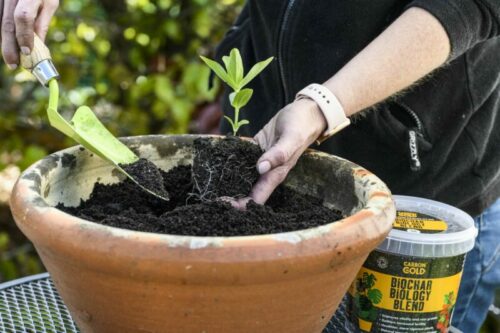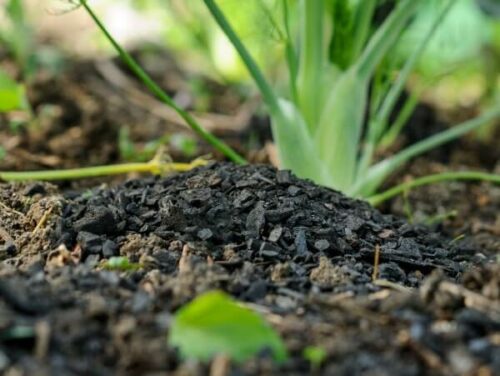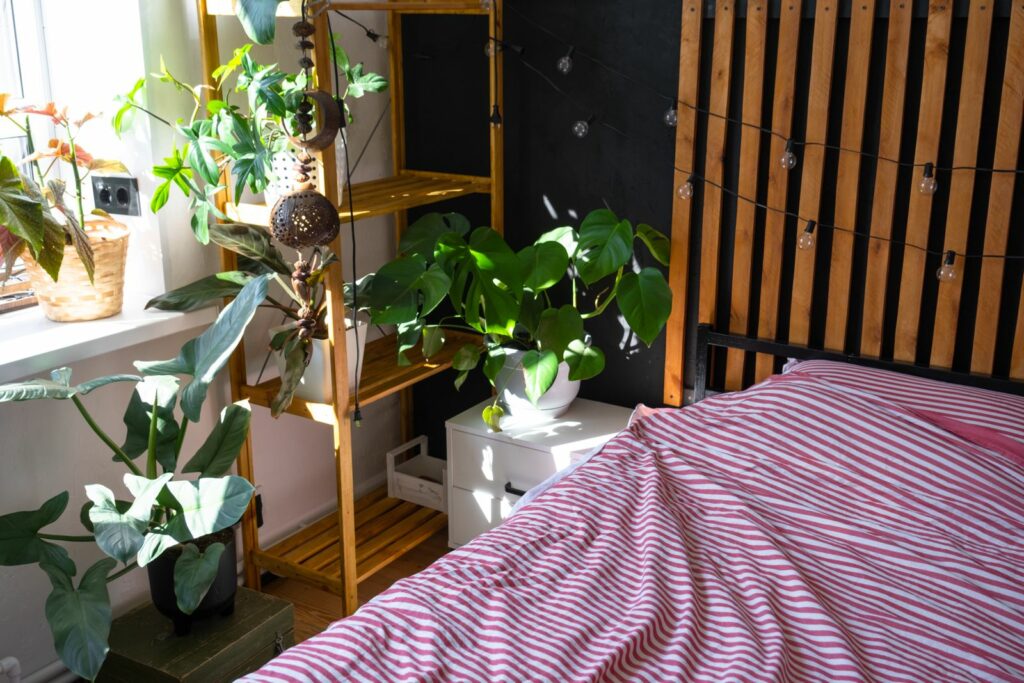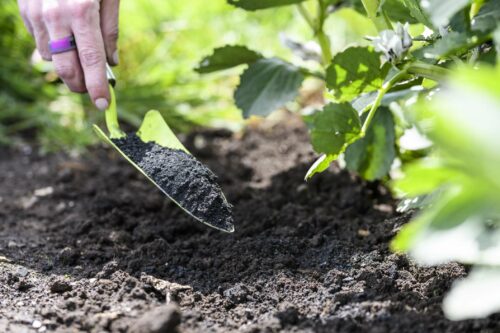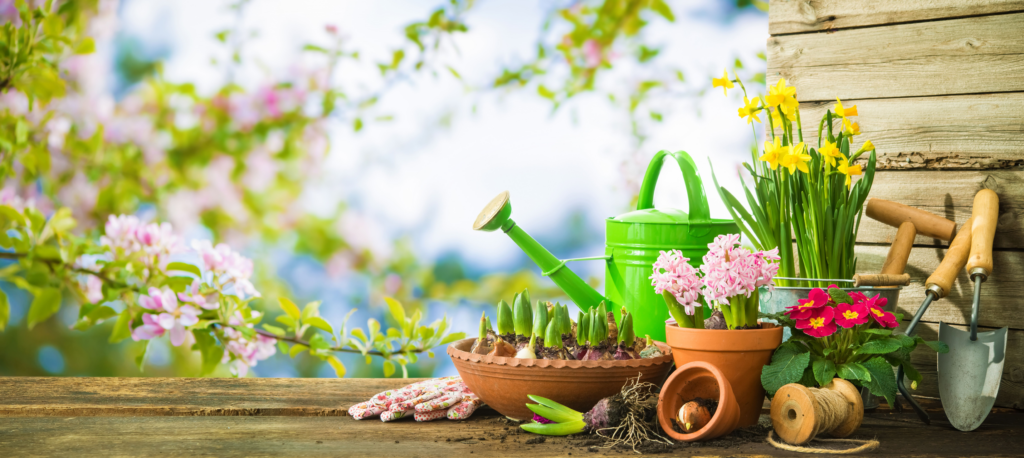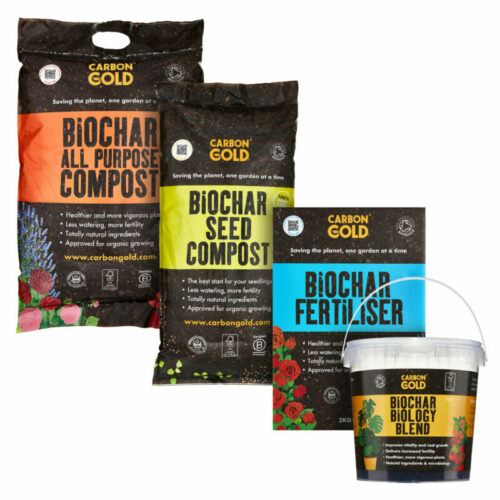Tubs and pots are a fantastic way to brighten up any garden and are a great option for those who are short on space or looking to add pops of colour to a patio or courtyard. Pots can also be moved around incredibly easily, allowing you to quickly transform your garden and try out new looks and combinations of plants. However, planting in containers differs from planting in beds, and there are some important considerations to bear in mind when you are starting out.
Beginners guide to container gardening
Our beginner’s guide to container gardening explores how you can avoid common pitfalls.
Be prepared to feed and water
Plants in containers are much more dependent on you than those that are planted out in a garden, so you will need to be prepared to feed and water them regularly. Standard potting compost often only has enough nutrients to last about six weeks, so be prepared to feed your plants weekly during the growing season after this point.
This requires a little extra time commitment but is great fun and a fantastic way to learn about your plans. There are products out there that can reduce the amount of watering you need to do, like our Biochar Soil Improver.

Choose your containers wisely
The containers you choose will have a huge impact on the success of your pots. Avoid containers that are too small as they will dry out easily and will struggle to sustain your plants.
Good drainage is also essential, so ensure you opt for pots with holes in the bottom of them. If the pots become waterlogged, the roots are likely to rot which will kill the plants if left untreated.
Consider the conditions
When choosing your plants, consider the conditions of your outdoor space, including how much sunlight they are likely to receive. Plants which suit the conditions of your garden will do much better and there’s plenty of choice available for any light situation. If you are planting more than one plant in a container, remember they will need to like similar light and watering conditions.
Think about flowering
Ideally, you want your containers to collectively offer a long flowering season. This will ensure you have something of interest (for both you and insects), for as much of the year as possible. So, consider how long your plants will flower for and at what time of year when planning your pots.
Rejuvenate your compost
Incorporating products with biochar, a pure, high-carbon form of charcoal, into your pots in a great way to give them an extra boost, either when repotting or at the beginning of the growing season.
Our Biochar Biology Blend is a powerful compost rejuvenator and incorporating just a small amount into your pots will give them an intense boost of all the trace minerals and natural biology that your plants will need for the season.
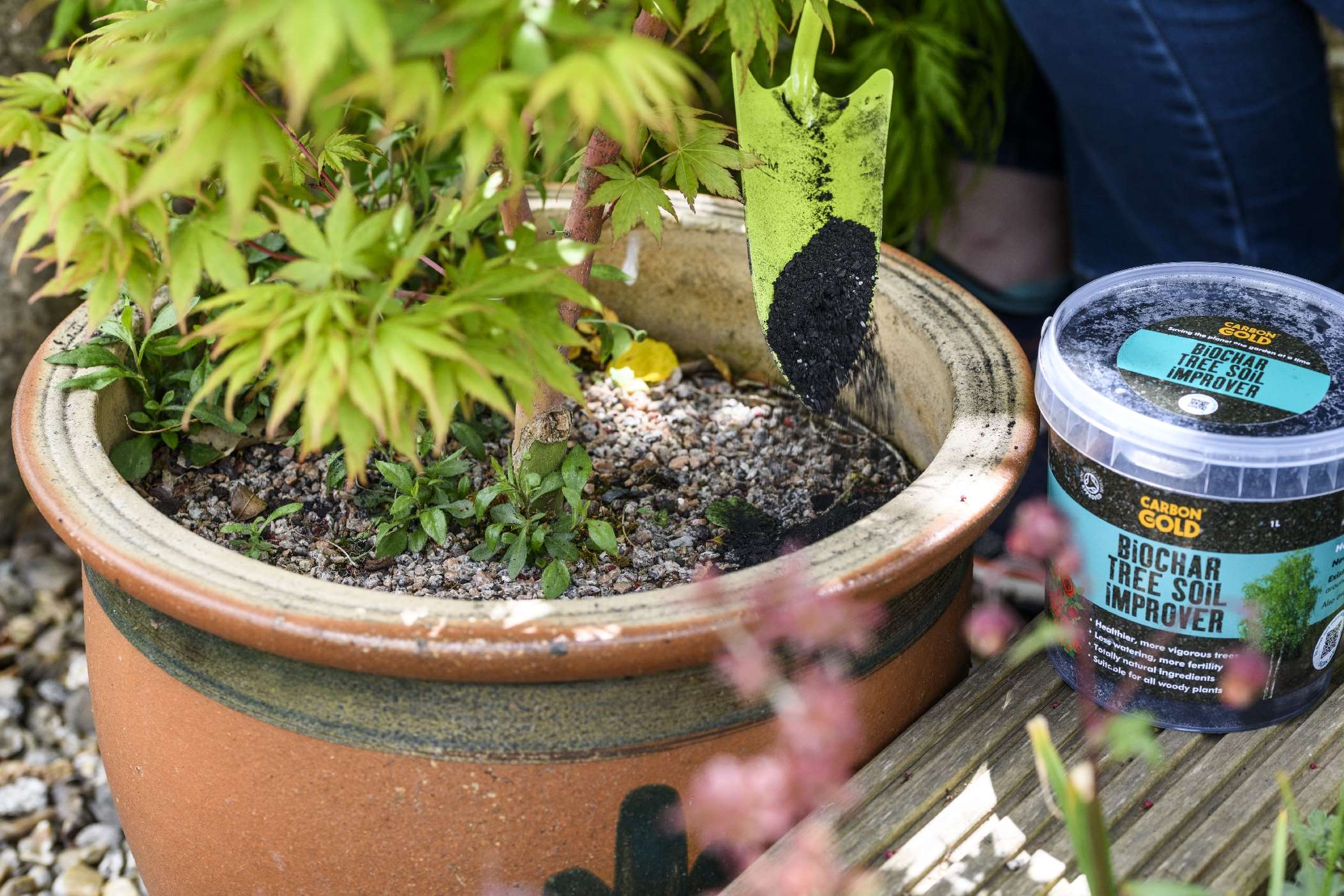
Create combinations which will thrive
Filling a container with a single specimen plant or a group of the same plant can be very impactful. But, if you want a look that’s a bit more interesting, a great garden design hack is to choose three types of plants for your container using the ‘thrillers, spillers and fillers’ rule of thumb.
A ‘thriller’ is a plant with wow factor, such as a tall grass or a climbing clematis. A ‘spiller’ will trail down the side of your pot adding additional interest. Plants like ivy or a trailing pelargonium work well for this. ‘Fillers’ are plants which help plug any gaps, such as a scabius or violas.
Plan your pallet
When it comes to choosing your colour pallet, opt for colours that are similar, such as oranges and reds, or create striking combinations by going for contrasting colours, such as orange and blue.
If you find this difficult, a great hack is using online paint colour pallet generators, like Canva. Also consider how your plants work with the texture and colour of your containers.
Group your containers
Grouping containers in clusters of three, four, or even more makes for a much more pleasing effect than dotting them around.

Think vertically
Opting for plants that grow upwards is a great option for maximising the space available to you. For example, a clematis growing up an obelisk in a container looks very dramatic and makes the most of all your unused vertical space.
Source some inspiration
If you lack confidence, wander around your garden centre for a little inspiration. Often, they will have containers planted up to sell. Make a note of the plants they’ve used (ask one of the assistants if you aren’t sure) and, instead of buying the ready-made pot, replicate the effect yourself at home.
This is much cheaper and more fun than buying a ready-made pot. As your confidence grows you can add a twist or two by adding your own ideas.
Read the labels
Always read the instructions on a plant’s label before planting it. If there’s not enough information on the label, look online. There are some fantastic free resources available, such as the Plants Database from Garden.org.
Find out what your plant’s eventual spread and height will be, what conditions it likes, when it flowers and whether it is an annual (a plant which only lasts a year) or a perennial (something which comes back every year).
All of this is useful information and will tell you whether or not it will be happy in the container you have in mind for it.
Plant with nature in mind
You can also use the label of the plant or the internet to find out whether it is particularly beneficial to pollinators, like bees and butterflies. Even a tiny patio or balcony planted up with the right plants will become a magnet for insects, helping you do your bit for the environment.
Opting for peat-free gardening products which contain biochar will also help you to benefit the planet and reduce your personal carbon footprint by permanently taking harmful carbon out of the atmosphere.
If you found our beginner’s guide to container gardening useful, why not check out our full range of biochar-based products for container gardening?
